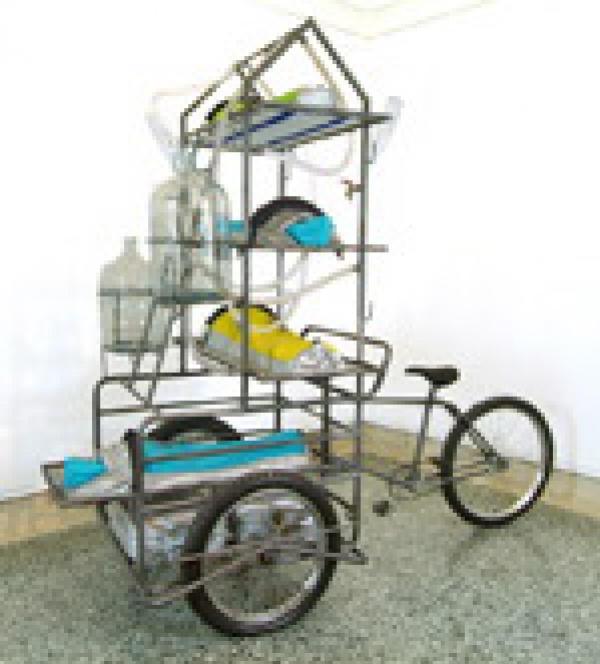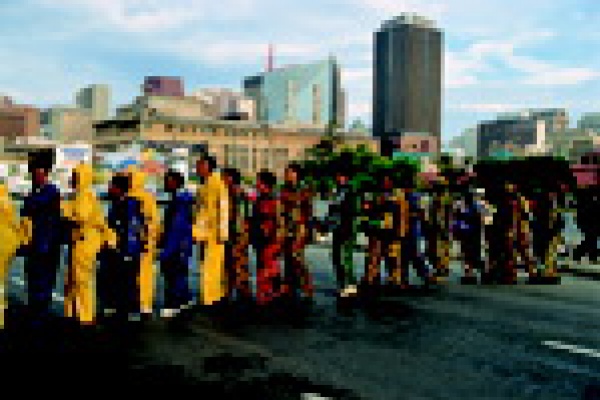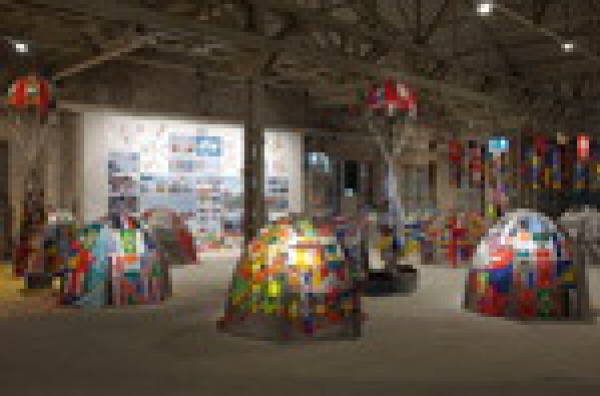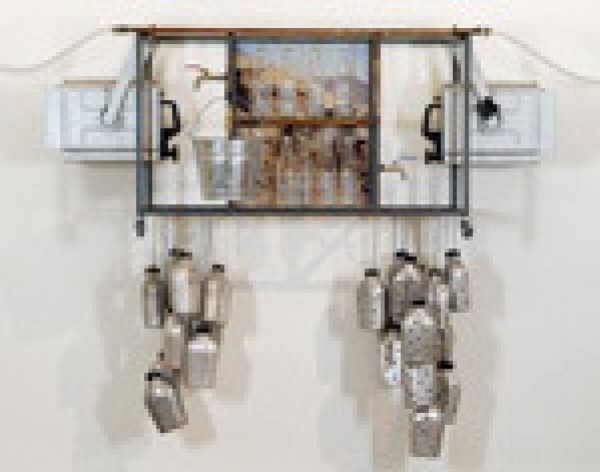
Green Platform
24 April 2009 - 19 July 2009
CCCS - Centro di Cultura Contemporanea Strozzina - Fondazione Palazzo Strozzi, Italy
Group Exhibition

OrtaWater
17 March 2009 - 17 April 2009
DSM, Holland
Solo Exhibition

Peace Summit Award 2008
12 December 2008
Hotel de Ville Paris, France
Event

70 x 7 The Meal act XXIX
30 October 2008
La Venaria Reale, Torino, Italy
Event

Survival
29 September 2008 - 31 October 2008
Fashion Space Gallery, London College of Fashion, UK
Solo Exhibition

Body Architecture
09 September 2008 - 02 November 2008
The Swedish Museum of Architecture, Sweden
Solo Exhibition

1% Water and our future
29 June 2008 - 28 September 2008
Z33, Belgium
Group Exhibition

Antarctica
28 June 2008 - 05 October 2008
Galleria Continua / Le Moulin, France
Survey exhibition
The Antarctic Village is an embodiment of a symbolic community open to all human beings, a ‘nation of humanity’ and a peaceful land for those who have been forced to leave their home country as a result of economic or natural disasters, war or political intimidation. With Antarctic Village – No Borders, the artists propose a new clause Article 13.3, to the Universal Declaration of Human Rights (1948) that would guarantee the right of freedom of movement and circulation.
The exhibition at Galleria Continua / La Moulin is an occasion to reflect on alternative solutions for a fairer form of globalization, where resources, freedom of movement and human rights could be guaranteed for everyone. Also on show are previous works by the artists dealing with themes relating to the environment, global warming, society, human rights, humanitarian intervention and the mobility and migration of peoples.
Le Moulin private view followed by DJ party opens on Saturday 28 June from 6pm until midnight.Navettes leave Paris at 5pm from Jardin des Plantes and return at 1am. For advanced bookings please contact: lemoulin@galleriacontinua.com. Galleria Continua / Le Moulin, 46 rue de la Ferté Gaucher, 77169 Boissy-le-Châtel

OrtaWater
14 June 2008 - 14 September 2008
International Expo Zaragoza, Spain
Group Exhibition

Carried Away Procession in Art
13 June 2008 - 21 September 2008
MMKA, Holland
Group Exhibition

Antarctica
03 April 2008 - 08 June 2008
Hangar Bicocca spazio d'arte, Milan, Italy
Solo Exhibition

Antarctic Village - 13:3
16 March 2008 - 01 June 2008
Fries Museum, Leeuwarden, Holland
Solo Exhibition

70 x 7 The Meal act XXVIII
23 February 2008
Villa Rothschild Monaco, France
Event

Antarctic Village - Works in Progress
23 February 2008 - 29 March 2008
Motive Gallery, Amsterdam
Solo Exhibition

Shelter / Survival - alternative homes for fantastic lives
16 February 2008 - 13 April 2008
Hiroshima City Museum of Contemporary Art, Japan
Group Exhibition, Curated by Takeshi Matsuoka

Antarctic Village - No Borders
24 November 2007 - 29 January 2008
Galleria Continua San Gimignano, Italy
Solo Exhibition

OrtaWater
25 October 2007 - 23 December 2007
CEAAC Strasbourg, France
Solo Exhibition

Urban Life Guard
21 October 2007 - 06 April 2008
Galleria Continua / Le Moulin, France
Group Exhibition

Fallujah - works in progress
29 September 2007 - 03 October 2007
Art Forum Berlin - Motive Gallery Amsterdam, Germany
Solo Exhibition

Fallujah - Casey’s Pawns: Prague City
19 June 2007
11th Prague Quadrennial of Performance and Theatre, Czech Republic
Performative Intervention